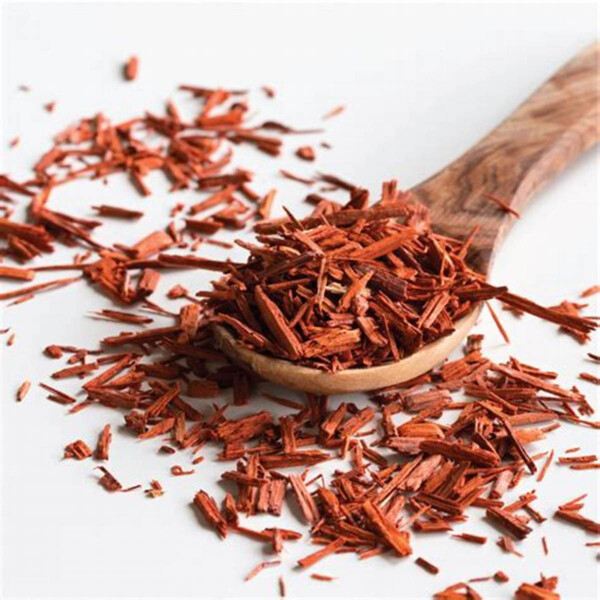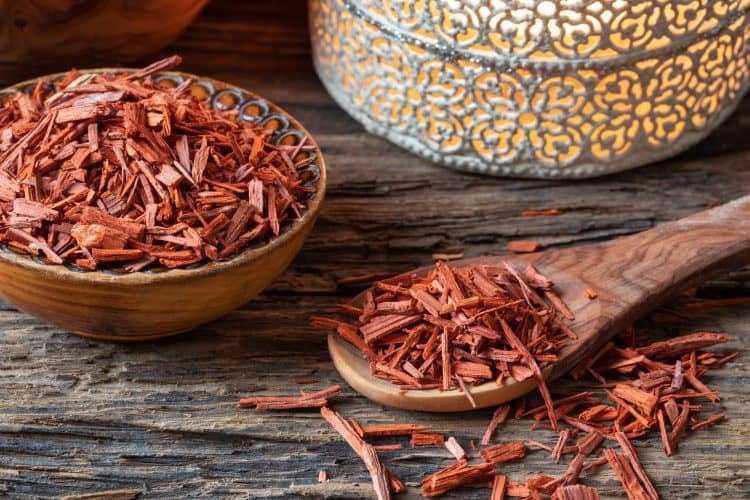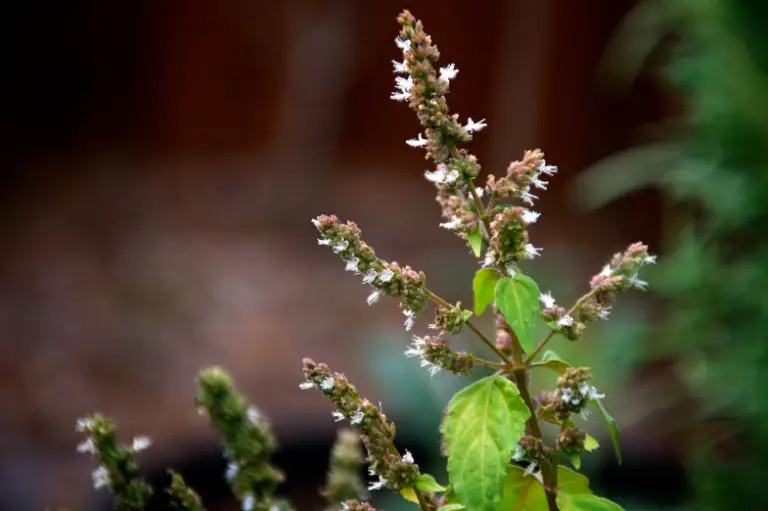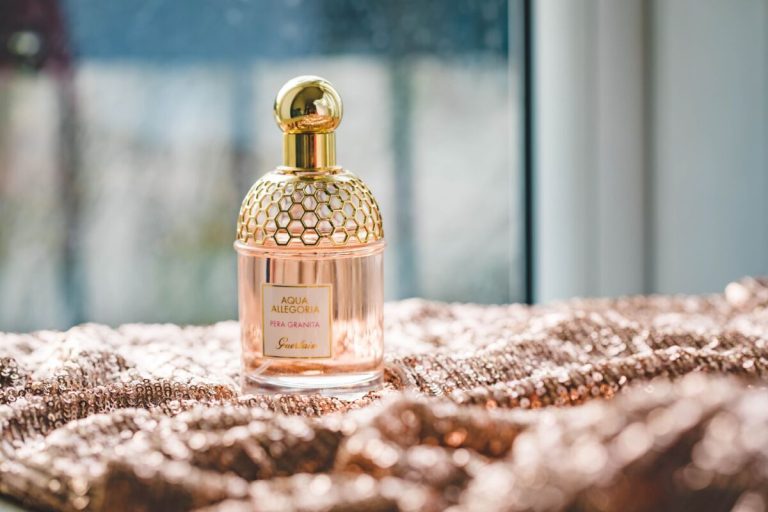What Does Sandalwood Smell Like?
Sandalwood has an alluring, unique fragrance that has captivated people for centuries. This mystical aroma has made sandalwood highly sought after in perfumes, incense, skincare, and various healing practices.
But what exactly does sandalwood smell like? Let’s take a deep dive into the fascinating scent profile of this treasured tree.
Sandalwood’s Complex, Sweet Scent
Contents
Sandalwood has a remarkably complex scent that can be described as sweet, creamy, earthy, and balsamic. Its primary odor compound is santalol, which gives sandalwood its distinctive woody aroma. When you inhale sandalwood’s fragrance, you’ll first notice its rich, sweet notes.
There is a distinctly vanillic, almost edible quality to sandalwood that reminds one of cookies or cake. Underneath the sweetness lies warmer, woodier tones evocative of cedar chests. The scent has a balsamic, ambery depth with subtle hints of flowers and fruit. Smokier accents weave throughout, creating an inviting, seductive appeal.
Sweet, Woody Aroma
The sweet, woody aroma is the most recognizable aspect of sandalwood’s fragrance. When blended into perfumes and cosmetics, this honey-like, tenacious scent acts as a fixing agent to bind other fragrances. On its own, the saccharine woodiness provides a smooth, creamy experience. There is a distinctly milky character to sandalwood that is utterly unique. This sweet, latticework scent makes it a popular ingredient in fragrances marketed towards women.

Warm and Inviting
In addition to its sweetness, sandalwood also has balsamic, warm, and inviting qualities. It conveys a sun-kissed tranquility, like the soothing aroma of suntan lotion. The cozy warmth reminds one of a day spent lounging under a beach cabana. Unlike some woody scents that can feel austere, the welcoming warmth of sandalwood uplifts the mood. This is part of what has made it so beloved for meditation, spiritual rituals, and aromatherapy.
Hints of Florals and Resins
Under its prominent sweet woodiness, sandalwood contains traces of floral and balsamic tones. Its complexity arises from subtle hints of rose, violet, jasmine, and fruity nuances. Sandalwood’s richness also stems from buried resinous layers. The balsamic quality brings to mind ancient apothecary shops filled with medicinal tinctures. This depth and mystery is part of what makes sandalwood so intriguing. It rewards you upon closer inspection.
Creamy, Buttery Notes
The creamy, buttery facet of sandalwood ties back to its distinctive sweetness. There is a rich, velvety milkiness reminiscent of vanilla ice cream. Combined with its soft woodiness, this creates an irresistible soothing impression. Sandalwood’s creamy signature makes it the perfect complement to sensual musks and vanillas in oriental perfume accords. Its ability to smooth out sharper notes is invaluable in fragrance creation.
Subtle Smokiness
While most strongly woody and sweet, sandalwood also reveals whispers of smokiness upon close inspection. This smoldering undertone adds mystique and allure. The faint smokiness paired with exotic woods gives sandalwood a beguiling edge. It conjures images of Arabian perfume markets with their exotic spices and resins. The dash of smoke makes sandalwood feel more decadent and opulent.
What is Sandalwood?

To understand sandalwood’s unique fragrance, it helps to learn exactly what it is and where it comes from. Sandalwood refers to woods from trees in the genus Santalum, with Santalum album being the primary species used for fragrance. Sandalwood trees are medium-sized evergreens native to India, Indonesia, Australia, and Hawaii. They thrive in hot, semi-arid regions. Sandalwood trees can live 100 years, but the most aromatic, dense heartwood usually occurs between 30-80 years of age.
Highly Prized in India and Beyond
Sandalwood has been treasured in India for over 4,000 years and plays a vital role in religious and cultural practices. The aromatic timber is carved into prayer beads and statues. Its essential oil scents cosmetics, funeral pyres, and temples. Due to its huge demand, India now struggles to meet supply. This shortage has subsequently made Australian and Hawaiian sandalwood more common in today’s fragrance industry.
It’s All About the Heartwood
The most coveted part of the sandalwood tree is its dense, fragrant heartwood. The heartwood forms slowly in the center of the tree and contains deposits of aromatic oils and resins. Sandalwood heartwood is incredibly tough and carves well, making it ideal for creating decorative objects, furniture, and spiritually significant items.
Santalol Equals Sandalwood Scent
The compound primarily responsible for sandalwood’s sweet, woody aroma is santalol. This organic compound makes up about 90% of the essential oil. Santalol has a tenacious quality that helps fix other fragrances, making it invaluable in perfumery. The highest grade sandalwood oil contains over 90% pure santalol and has the most desirable fragrance for aromatherapy use.
Therapeutic Properties
Beyond its heavenly aroma, sandalwood also has a long history of use in Ayurvedic medicine and aromatherapy. Practitioners have traditionally used its essential oil to treat anxiety, depression, inflammation, and skin disorders. Modern research has started to confirm its antimicrobial and anti-inflammatory properties. Studies also indicate sandalwood’s aroma can help elevate mood, reduce stress, and promote relaxation.
Similar Smelling Scents
While sandalwood has a unique fragrance, several other essential oils share similar woody and earthy qualities. These can be great alternatives if you enjoy sandalwood but find it too overpowering. Here are some of the closest smelling scents to explore:
Cedarwood
Cedarwood essential oil also has a sweet, woody scent reminiscent of sandalwood. It’s extracted from different evergreen trees of the genus Cedrus. However, cedarwood tends to be sharper and more resinous. It has a stronger peppery bite compared to the creamier sandalwood. Both share a pleasing woodiness that calms the mind.
Vetiver
Like sandalwood, vetiver root oil has deep earthy, woody notes with subtle smokiness. Its aroma is drier and cooler in nature. Vetiver oil is steam distilled from the thick, fragrant roots of a perennial grass. Its pleasantly musty aroma has made it popular in men’s colognes.
Patchouli
The heavy, musky smell of patchouli essential oil has some resemblance to sandalwood. Derived from a bushy herb, patchouli has more pungent earthy tones. However, it shares subtle sweet facets that blend nicely with sandalwood. Together they create a hippie-chic aroma popularized in the 1960s and 70s.
Agarwood (Oud)
Exotic agarwood, sometimes called oud, also has a rich, woody character. The resinous heartwood forms in Aquilaria trees affected by a fungal infection. In perfumes, agarwood lends a complex, animalic nuance along with subtle sweetness. Its rarity and mystique has made agarwood popular in Middle Eastern perfumery.
Complementary Scents
One of the reasons sandalwood is such a popular perfume ingredient is its incredible versatility. Sandalwood’s creamy woodiness blends beautifully with all types of notes. Here are some examples of scents that mix wonderfully with sandalwood:
Sandalwood and Florals
Sandalwood effortlessly picks up and enhances floral notes like rose, jasmine, ylang ylang, and violet. It adds depth, volume, and tenacity to delicate petal scents. The combination feels romantic and feminine.
Sandalwood and Citrus
Bright citrus oils like bergamot, lemon, grapefruit, and neroli beautifully counterbalance sandalwood’s thickness. Together they create an uplifting, radiant effect. Citrus oils also help spotlight sandalwood’s hidden fresh facets.
Sandalwood and Musk
Pairing sandalwood with rich, sensual musk oils amplifies its aphrodisiac allure. The duo creates a magnetizing harmony perfect for seductive perfumes. Rose musk and honey musk work especially nicely with creamy sandalwood.
Sandalwood and Vanilla
Smooth vanilla absolute and sandalwood makes an intensely comforting blend. Their shared vanillic sweetness intensifies to create feelings of childhood nostalgia. A touch of sandalwood cuts the cloying aspect of sugary vanilla.
Sandalwood and Smoky Notes
Pairing sandalwood with incense-like oils such as frankincense, myrrh, and labdanum amplifies its smoke. This combination creates a mystical, church-incense vibe. Tonka bean also adds roasted depth next to creamy sandalwood.
Popular Fragrances with Sandalwood
Given its versatility and popularity, it’s no wonder sandalwood shows up in countless fragrances. You’ll find it used in women’s, men’s, and unisex perfumes across fragrance families. Here are some favorite fragrances that highlight sandalwood’s beauty:
Sandalwood as Top Note
Although traditionally used as a base note, sandalwood also shines as a top note in some modern fragrances. When used at the top, sandalwood’s sweet woodiness makes a pronounced impression.
Tam Dao by Diptyque
This exotic sandalwood fragrance opens with bright bursts of rose, cypress, and citrus before settling into the creamy sandalwood heart.
Santal 33 by Le Labo
Leather, cardamom, and iris pair gorgeously with the prominent sandalwood in this modern woody fragrance.
Black Orchid by Tom Ford
Sandalwood mingles with rich florals, fruit, and musk to create an intoxicating elixir.
Somebody Wood by Phlur
An inviting blend of sandalwood, cedar, and tonka bean wrapped in jasmine and rose petals.
Classic Sandalwood Fragrances
Sandalwood plays a supporting role in many beloved classic perfumes. Its fixative properties help these fragrances achieve their unique character and lasting power.
Chanel No. 5
Sandalwood helps temper the aldehydic bite and floral heart of Chanel’s renowned perfume.
Narciso Rodriguez For Her
Musk and patchouli blend seamlessly with subtle sandalwood in this modern feminine fragrance.
CK One by Calvin Klein
A clean, minimalist blend of citrus, tea, and musk grounded by hints of sanded wood.
The Allure of Sandalwood
With its multifaceted sweet and woody aroma, sandalwood has an undeniable magnetism. The fragrance manages to be nostalgic yet exotic, comforting yet sensual. Beyond its compelling scent, sandalwood also has a fascinating history of spiritual and cultural significance. It’s truly one of the most revered ingredients in perfumery. Sandalwood’s smooth complexity continues to intrigue both nose and mind. There is always another subtle facet waiting to be discovered in its mystical, shifting layers.

Founded by Sophia Rodriguez, IGXO Cosmetics is a PETA-certified, cruelty-free, and vegan makeup brand.





